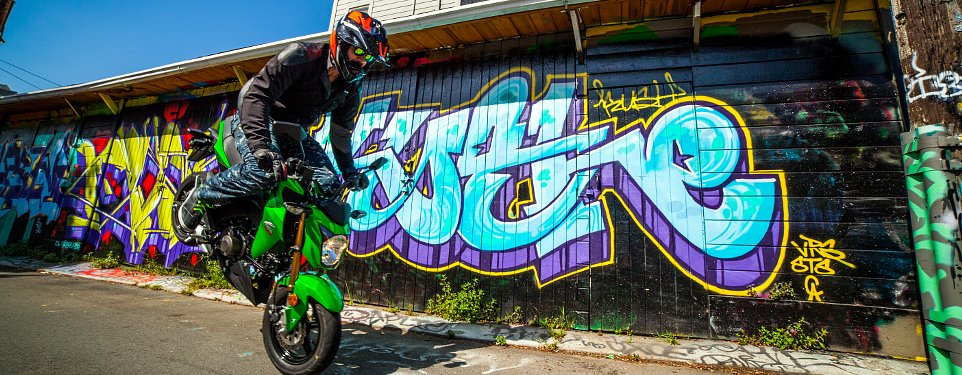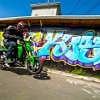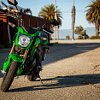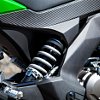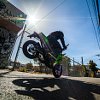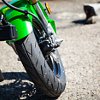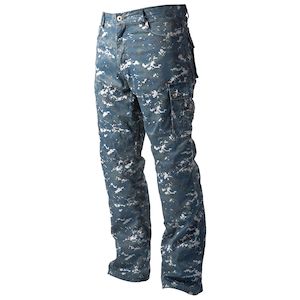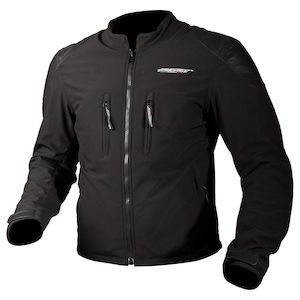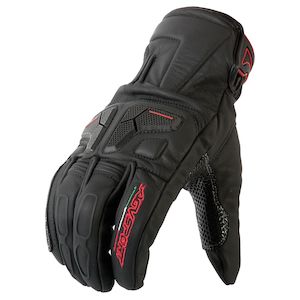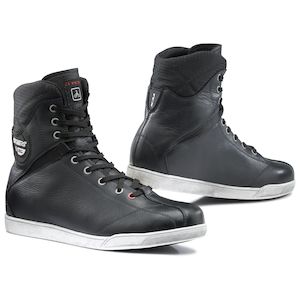The whine of the Z125 Pro’s exhaust howled like a sewing machine from hell with the throttle pinned. The light turned green and we were off, tearing across the asphalt like kids fighting for the hole shot in a minibike race.
In that moment we were kids. A group of grown-ass men and women whipping tiny motorcycles around the streets of San Francisco, laughing and cutting it up while pedestrians stopped to take photos and stare.
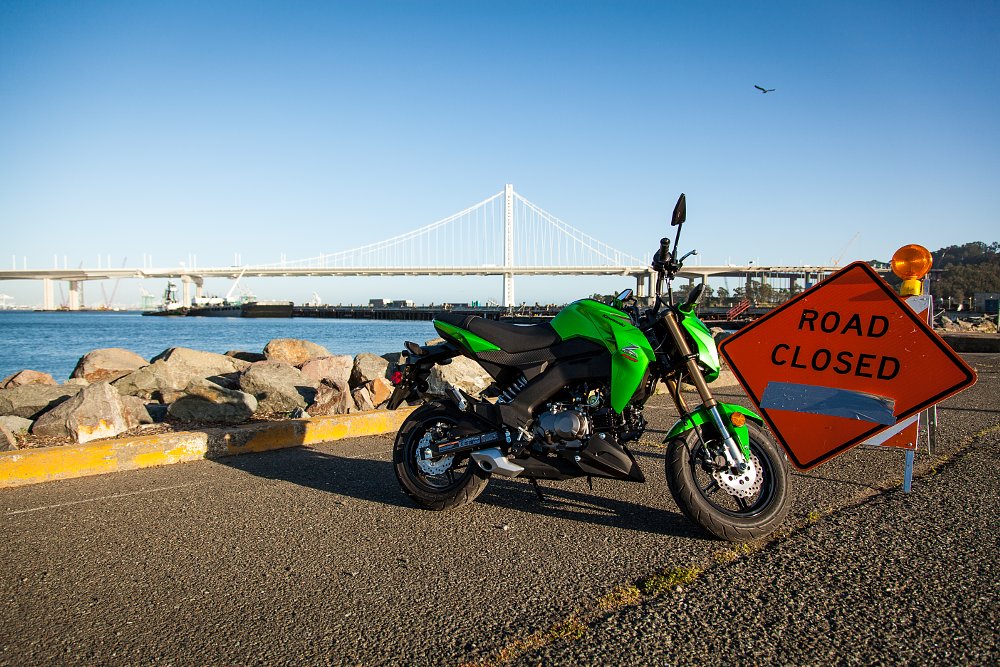
The previous evening, Kawasaki had assured us that the 2017 Z125 Pro was aimed as much at veteran riders as it was at beginners. Within the first minutes of the press ride, it became clear that Kawasaki was willing to put their money where their mouth was on this.
How much money? $2,999.

That’s how much a new Z125 Pro will set you back. It’s no coincidence that this MSRP comes in about $200 cheaper than Honda’s 125 cc Grom.
According to Kawasaki’s research, the sub-400 cc street bike market has grown 127 percent over the past five years. The number-one selling bike? The Kawasaki Ninja 300. The second-best-selling bike? The Honda Grom. Kawasaki refers to this as the “Mini Street Segment” and feels it’s high time the Grom has some competition. They have just the bike for the job.

At first glance, the Grom and Z125 Pro could be construed as one and the same. That perception doesn't hold up once you ride them. In preparation for this ride, I spent the past few days riding around Philly on a Grom to make sure it was fresh in my mind as I mounted the Z125 Pro.
Immediately, the Z125 Pro felt tighter. I attribute a lot of this to the suspension. The 30 mm inverted fork and rear shock with four positions of preload adjustment absorbed all of the abuse from the San Francisco streets without ever calling “uncle.” Kawasaki claims the little Z has a carrying capacity close to 350 pounds and I believe it. I left the preload on the second setting and never once felt like I needed more.

With that being said, I tip the scales at 205 pounds on a good day and I can’t imagine the little 125 cc engine wanting to handle any more weight. As Lance noted in his first look at the Z125 Pro, Kawasaki’s engine has a slightly shorter stroke than the Honda’s. What this means is that the engine spins about 500 rpm faster up top and power comes on slightly later in the rev range.
Perhaps it was just my imagination, but the Kawi’s engine also felt a bit more powerful. But power and speed are relative. You'll be lucky to hit an “indicated” 60 mph and you’ll spend most of the time using the Z125’s rev limiter to let you know it’s time to shift. Climbing the bigger hills of San Francisco, I found myself furiously downshifting to maintain speed.
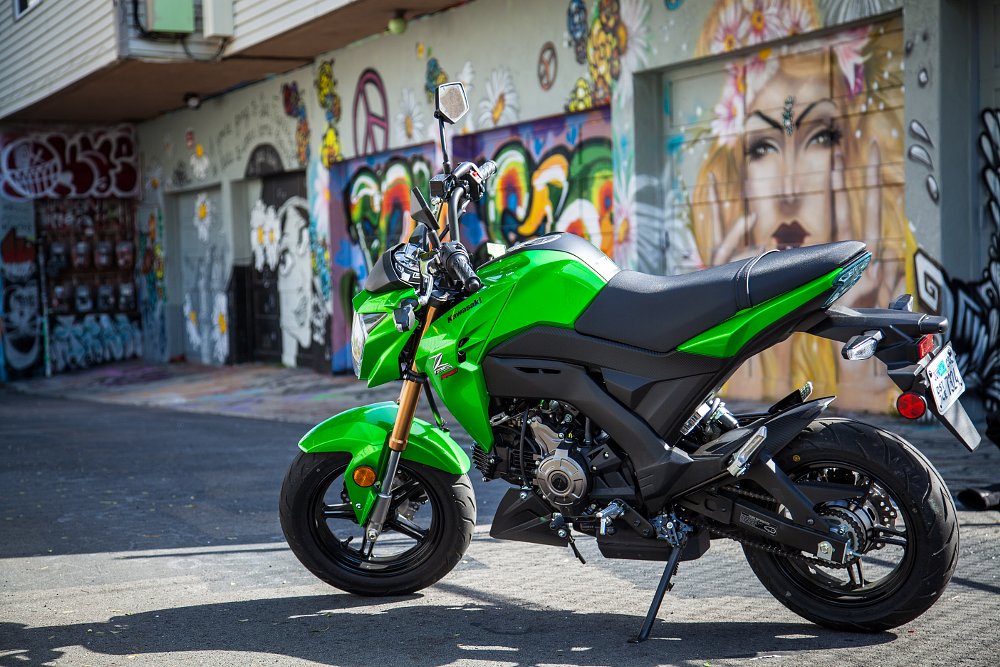
Shifts came easy from a very impressive four-speed gearbox. When Kawasaki first announced that this was the same set up as found in the automatic “non-Pro” Z125 (not available in the United States) outfitted with a clutch, I was immediately skeptical. I was expecting loose, sloppy shifts, I was wrong. The Z125 offered a light clutch pull and precise shifts. The non-adjustable lever was clearly a budget piece and I would recommend swapping both the clutch and brake levers for an adjustable aftermarket setup.
The brakes on the Z125 Pro were an exercise in self-control. As ABS is not an option, it is all too easy to get sideways with this little bike. I found myself getting really good at sliding the rear end around and stopping on the front wheel.

While cost is probably the main reason ABS is not available, I think that's a good thing. It allows new riders to learn how to use their brakes to control their stops without relying on ABS as a crutch. At 225 pounds, the Z125 Pro provides a small, lightweight package that is easy for new riders to learn to control before moving on to larger bikes. ABS is a great rider’s aid, but it shouldn’t be used a substitute for knowledge.
Ergonomics were a bit cramped for my six-foot, three-inch frame. While I appreciated the 31.7-inch seat height (roughly two inches taller than the Grom), I found my knees continually coming into contact with the handlebars. A higher handlebar will be a needed alteration for long-legged riders. For the vertically challenged, the Z125 Pro might stand a bit tall.
Overall, the Z125 Pro feels like a bigger bike than it actually is. I would attribute part of this to the selected tire sizes. Unlike the Grom, which wears shorter, wider rubber, the 100/90-12 on the front wheel and the 120/70-12 rear make this bike feel more like a motorcycle and less like a scooter.

Our day started out in Fisherman’s Wharf at 8:30 a.m. and ended 12 hours later on Treasure Island. My little Z125 Pro pretty much remained at WOT for the duration of the ride. It was a futile effort to keep up with the likes of Jamie Robinson from MotoGeo, Adam Waheed, formerly of Motorcycle USA, and Ryan Yearwood, the Tennessee Tornado from Nashville writing for Next Moto Champion.
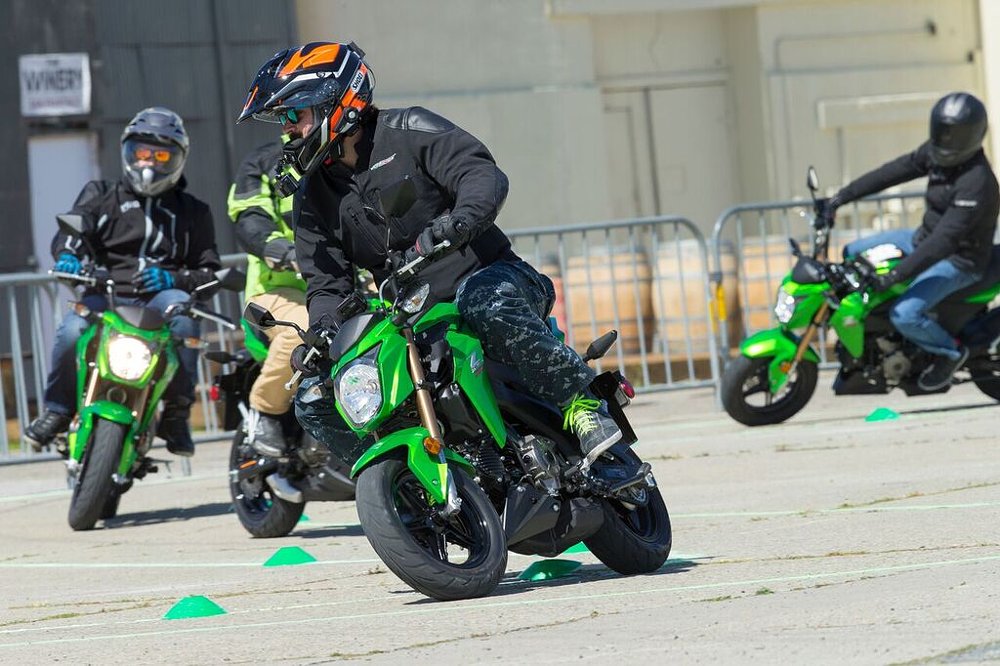
These guys were much faster riders than I am. I lost count of how many times they passed me on the closed course minimoto track that Kawasaki set up. But damned if I wasn’t grinning wider than anyone else. At the end of the day, we skipped the wine bar, cracked some beers, and toasted one another on a hell of a day's worth of riding.

With a two-gallon tank and a claimed 135 mpg (during modest riding) it was clear you could have a lot of fun with $5 worth of gasoline and the right group of friends. For the college student looking for a cheap commute to class, that means a lot of extra beer money in your pocket. For the more experienced rider that’s a lot of extra money to dump back into the bike to turn it into whatever your heart desires. Or, it's a pit bike that's more fun than a scooter but doesn't rob much money from your track-day fund.
All you Kawasaki fans finally have a "Green Monster" to pit against those "Big Red" riders at your local go-kart track. In his first look article, Lance suggested Lemmy and I race a Grom and a Z125 Pro against one another. If that ever comes to fruition, I call the Team Green machine.
2017 Kawasaki Z125 Specs
| Price | $2,999 |
| Displacement | 125 cc |
| Bore x Stroke | 56 mm x 50.6 mm |
| Compression Ratio | 9.8:1 |
| Front Tire | 100/90-12 |
| Rear Tire | 120/70-12 |
| Wheelbase | 46.3 in |
| Seat Height | 31.7 in |
| Curb Weight | 224.8 lbs* |
| Fuel Capacity | 2 gal |
*as claimed by the manufacturer




